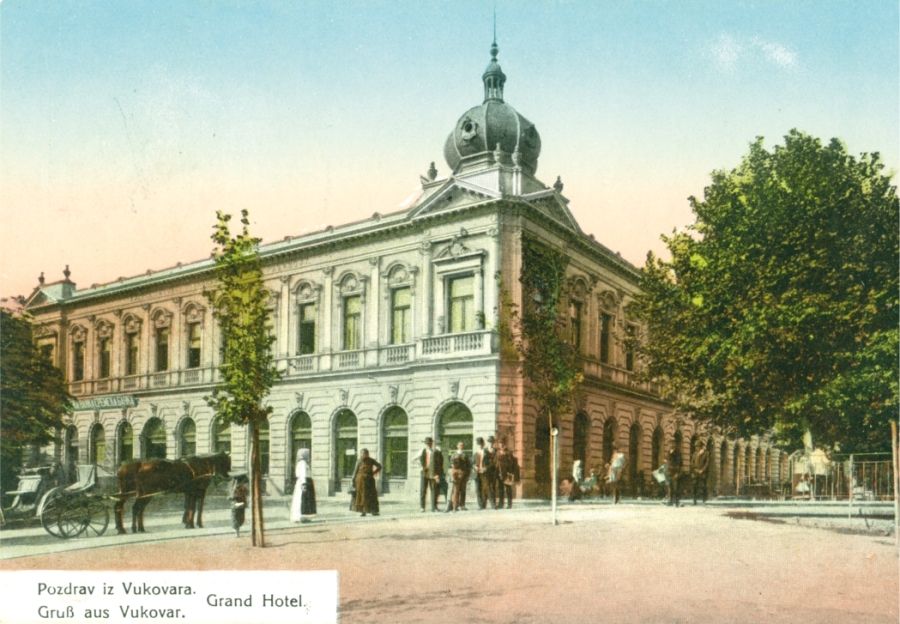Vukovar
Vukovar is situated in the northeast of Croatia and it is the centre of Vukovar-Srijem County. Positioned on the border of historical provinces of Eastern Slavonia and Western Srijem, the town lies on important transportation routes. Since time immemorial, traffic from the northwest to the southeast has moved through the Vukovar area and the Danube valley. With the introduction of steamboats mid-19th century and tourist vessels nowadays, Vukovar is connected with Budapest and Vienna upstream and all the way to Romania downstream. The port of Vukovar, the biggest river port in Croatia, is an important import and export station. The Danube has always connected Vukovar’s residents with Europe and the world and it continues to do so today.
The area of Vukovar has always been a crossroads, a meeting point of different cultures, but also a battleground in wars. It has been continuously settled for five thousand years, as evidenced by numerous archaeological sites. The Vučedol culture, named after the Vučedol site, located five kilometres downstream on the Danube, holds particular importance for this area. The Vučedol Dove, found at this site in 1938, has become a symbol of the town. The Vučedol Orion, believed to be the oldest Indo-European calendar, is equally significant.
The Vukovar region is also home to many archaeological sites from the Bronze, early and late Iron Age that provide insight into the lives of the Illyrians and the Celts. The Romans have reached the Danube during their conquests during the last decades BC. They constructed many fortifications as a border (the so-called Danube Limes) against the barbarian tribes. The Roman civilisation has influenced the economy of the area: marshes were drained and first vineyards were planted. After the fall of the Roman Empire, the Migration Period and the expansion of the Avars and the Slavs from the 6th century onwards have brought significant changes. The Danube-Sava interamnium has become a venue for major conflicts and interests of powerful states of the time. Croats began to inhabit the area at this time.

The preserved documents mention Vukovar at the beginning of the 13th century under the names of “Volko”, “Walk”, “Wolkow” and, finally, under the Croatian name of “Vukovo”. The Hungarised name of Vukovar has seen increased usage from the 14th century onward. Croatia was in a union of states with Hungary at that time. Vukovar, as well as the neighbouring town of Ilok, became the guardian of the Croatian identity in the Danube-Sava interamnium. In 1231, as one of the first cities in the state, Vukovar was awarded the status of a free royal town by the charter of Duke Coloman. Vukovar was the seat of the Vukov County, which spanned the area between the Danube and the Sava.
After the Ottoman dominion (in the 16th and the 17th century), a significant part of the Vukovar area was purchased by the German Counts of Eltz, who will have a significant influence on the economy and culture of Vukovar during the following two centuries. German, Hungarian, Jewish, Rusyn, Slovak and Ukrainian immigrants also moved to the area at the time. Thus, the area became multi-national and in 1745 Vukovar became the centre of the vast Syrmia Country.
After the Second World War, Vukovar has developed into a powerful textile and food industry centre, thus becoming one of the most-developed towns in the former country of Yugoslavia.
Vukovar is a symbol of resistance, invincibility and persistence. Vukovar is also a symbol of peace in which courage, self-sacrifice and the greatness of its defenders give it an exalted place in the creation of an independent Republic of Croatia.
And then came 1991. The beginning of the armed assault on Vukovar happened on 2 May 1991, when 12 Croatian policemen were killed in Borovo Selo. The attack on Vukovar began on 24 August 1991 and the town had been under constant siege for three months. On 18 November 1991 Vukovar lost the battle and succumbed to military occupation. The non-Serbian population (about 22,000 people) was exiled from the town, while more than 6,000 residents of Vukovar were taken to numerous camps in Serbia. Many of them were abused, and some never left the camps alive. The town was devastated in 1991.
The approach to its reconstruction was based on the viewpoint that the town’s most recognisable features – its old streets and squares – have to be restored, so as to give the town on the Danube its recognisable, Western-European baroque flair.
The process of peaceful reintegration began in 1997. The Town’s Administration has re-established conditions for the return of institutions and the exiled population and from that moment on, with each passing day, Vukovar has been rebuilding its former identity.


